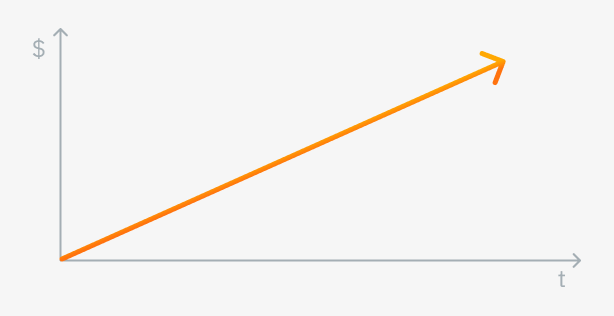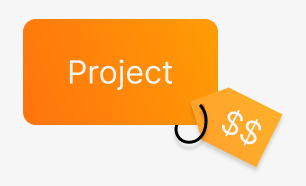Complete guide to agency pricing models and engagement models
Discover the key factors in choosing the right agency pricing models for your agency or project. From hourly rates to performance-based models, we break down the pros and cons to help you make an informed decision.

Introduction
Choosing the right agency pricing models is a critical decision for both clients and agencies. It’s a factor that can significantly impact the quality of the work, the relationship between the agency and the client, and ultimately, the success of the project.
At Point Jupiter, we primarily use two agency pricing models: hourly (time and material) rate and project-based (fixed fee).
This guide aims to provide a balanced view with pros and cons of four popular agency pricing models:
- hourly rate (time and material),
- Project-based (fixed-fee),
- value-based, and
- performance-based.
Whether you’re a potential client looking for the best fit or an agency owner rethinking your pricing strategy, this post will offer valuable insights.
Hourly (time and material) rate pricing model
The hourly rate agency pricing model is often the first method that comes to mind when people think about agency pricing.
In this straightforward approach, agencies bill clients for each hour of work completed. It’s a time-tested method that excels in its simplicity.

Pricing your services based on an hourly rate is easy for clients to understand. Each hour spent on tasks, whether it’s design, development, or strategy, is itemized, providing a transparent breakdown of costs.
Moreover, this model is straightforward to explain and offers simple bookkeeping, making it easier to calculate prices and maintain records.

Benefits of the hourly (T&M) rate model
The hourly rate model is known for its high level of transparency, a feature often appreciated by clients who like to see where every minute is spent.
It allows for flexibility; if a client decides to change the project scope or add additional features, these can be easily incorporated without complicated contract revisions. The ease of making these changes can simplify the sales process.
Additionally, the straightforward nature of this model facilitates simple bookkeeping and makes it easier to calculate final costs.
Essentially, these are key benefits:
- Transparency – Clear understanding of how time is allocated.
- Flexibility – Easy to adjust project scope without contract hassles.
- Simple record keeping – Easy-to-calculate prices and straightforward record-keeping.
Disadvantages of the hourly rate pricing model
While transparency is a strength, the hourly model can also introduce some challenges. The first is financial uncertainty for the client. Costs can escalate if the project runs into unforeseen issues or experiences scope creep, where the project’s requirements expand without a corresponding budget increase.
This model can sometimes cap the agency’s profit if tasks are completed quickly but still require high-level expertise. Another drawback is that it can lead to questions between the client and the agency about efficiency, as the focus tends to be more on costs and profits rather than the value delivered.
Summary:
- Uncertainty – Final costs can fluctuate based on project complications.
- Potential for scope creep – Risk of project expansion without budget adjustments.
- Questions on efficiency – Focus on costs and profits can overshadow the value delivered.
Project-based (flat-fee) pricing model
The project-based or flat-fee model is another commonly used approach and one of the agency pricing models. Here, a fixed price is agreed upon before the project starts, covering all tasks, milestones, and deliverables. Essentially, you are paying the project price.
This model brings a level of predictability to the table that is often beneficial for both parties. Clients appreciate knowing the full cost upfront, and agencies find it easier to manage their bookkeeping with a single, lump-sum payment.

Benefits of the project-based model
One of the most significant advantages of the project-based model is its predictability. Clients know exactly what they are getting and at what cost, easing budget planning and approval processes.
This fixed price also reduces the risk of scope creep, as any change in project requirements would typically necessitate a contract revision and additional fees. For agencies, this model can offer better profit margins if the project is well-scoped and the team can complete the work efficiently.
In other words, higher efficiency and faster project completion can result in better profitability without affecting the client’s cost.
Highlights:
- Predictability – Clients can easily plan budgets.
- Reduced risk of scope creep – Changes usually require contract revisions.
- Better profitability for agencies – Efficiency and accurate scoping can lead to higher profit margins.
Disadvantages of the project-based pricing model
While the project-based model offers predictability and potential profitability, it isn’t without drawbacks.
Its limited flexibility can be a significant issue; once a price is set, accommodating changes or additional features without revising the contract becomes challenging. This rigidity can deter clients who need more adaptive solutions.
Also, the fixed price could be a disadvantage for the agency if the project requires more work than initially estimated, which would cut into profits.
Drawbacks:
- Limited flexibility – Changes are hard to implement without contract adjustments.
- Risk for agency – Underestimation of work can impact profits.
Value-based pricing model
Value-based pricing is an approach that goes beyond mere hours spent or tasks completed.
Instead, it focuses on the value or results that the agency’s services bring to a client. It’s a model that aligns the agency’s incentives with client outcomes, often tied to specific performance indicators like lead generation or revenue growth. As such, it’s often found in marketing agency environments.
This model can make the sales process more complex but also more aligned with long-term goals.

Benefits of the value-based model
The main benefit of value-based pricing is its focus on results rather than inputs. Clients aren’t paying for time; they’re paying for outcomes, which is a powerful selling point.
This model can be particularly effective for services with a clear ROI, such as lead generation or conversion rate optimization campaigns. Agencies may also find that this approach allows for higher profit margins, as clients are often willing to pay more for guaranteed results.
Key points:
- Focus on outcomes – Payment is tied to specific results, not hours spent.
- Effective for clear ROI services – Well-suited for tasks like lead generation.
- Potential for higher profits – Clients may pay more for guaranteed outcomes.
Disadvantages of the value-based model
Despite its advantages, value-based pricing isn’t perfect.
One major downside is that it can be difficult to quantify the value delivered, making it challenging for clients to understand fully. There’s also a greater risk for the agency; if the expected results are not met, it could result in reduced or lost compensation.
Additionally, this model requires a more complex sales process, as both parties must agree on the metrics used to determine value, which can prolong contract negotiations.
Caveats:
- Difficult to quantify – Measuring the value delivered can be complex.
- Riskier for agency – Compensation is tied to achieving specific results.
- Complex sales process – Metrics and outcomes must be agreed upon in advance.
Performance-based pricing model
The performance-based model is an extension of the value-based model but with a stronger emphasis on measurable outcomes. Here, compensation is directly tied to specific performance metrics, such as click-through rates, sales conversions, or other KPIs.
This approach can make it very easy for clients to understand the direct impact of the agency’s work, as success or failure is clearly defined by quantifiable results.

Benefits of the performance-based approach
The performance-based model offers a high level of transparency and accountability, as both the agency and the client have a vested interest in achieving strong results. This can streamline the sales process, as potential clients can quickly grasp the win-win scenario.
For agencies, this model can be particularly beneficial in terms of lead generation and client retention, as happy clients are likely to continue the partnership when they see a direct impact on their bottom line.
Key benefits:
- High transparency – Success is defined by measurable outcomes.
- Streamlined sales process – Easy for clients to understand the direct impact.
- Benefits for lead generation – Happy clients often lead to long-term partnerships.
Disadvantages of the performance-based approach
Although promising, the performance-based model has its share of drawbacks. For starters, it places a lot of risk on the agency, as payment is often contingent on meeting or exceeding specific performance metrics.
This can lead to fluctuating monthly retainers or fees, making it hard to predict agency revenue. Also, it might not be suitable for all types of projects, as not every service offered can be easily measured in terms of performance.
Caveats:
- High risk for agency – Payment is contingent on performance metrics.
- Fluctuating revenue – Monthly fees can vary based on performance.
- Not suitable for all projects – Some services can’t be easily measured.
How to choose the appropriate agency pricing model
When it comes to selecting the right pricing model, both agencies and clients have specific considerations to weigh.
The ultimate goal is to align the agency’s capabilities with the client’s needs in a manner that’s sustainable and profitable for the agency, while delivering value to the client.
Let’s explore some criteria to use when making this decision.
Align with business goals
For agencies, the pricing model chosen should be in sync with your broader business strategy.
Whether it’s maximizing profit margins, simplifying bookkeeping, or focusing on long-term client retention, your pricing model should support these aims.
From the client’s side, they are often looking for predictability, performance, and value for money.
But remember, aligning with business goals is especially crucial for agencies that are scaling or aiming for specific revenue targets.

Assess the nature of the project
Agencies should evaluate the type of project in question. Is it a short-term, well-defined project or a longer-term engagement requiring ongoing support?
For project-specific work, flat-fee arrangements often make the most sense.
For long-term partnerships, monthly retainers or performance-based models may be more appropriate.
Clients, too, should think about their project scope when considering different models. But the agency’s profit and efficient use of resources should take priority in this evaluation.

Understand risk tolerance
Agencies need to gauge their comfort level with risk.
Performance and value-based models can offer higher rewards but come with more uncertainty. This is something agencies are usually better equipped to handle, given their expertise.
Clients are generally less tolerant of risk, preferring fixed prices or well-defined scopes.

Complexity of the services
If you’re an agency offering services that are easy for clients to understand, like web development or graphic design, hourly or project-based models are often less complicated and easier to manage.
For services like advanced marketing campaigns or AI/ML services, which have more abstract value, a performance or value-based model may be more fitting.
Criteria summary:
- Business goals alignment — Make sure your model supports your long-term aims.
- Project nature assessment — Consider the length and type of engagement.
- Risk tolerance understanding — Gauge the level of risk both you and your client are comfortable with.
- Service complexity consideration — Choose a model that complements the intricacy of your services.

Conclusion
Choosing the right pricing model among different agency pricing models is a crucial decision for both agencies and clients. While various models offer their own unique benefits and drawbacks, the key lies in aligning your choice with your business goals, the nature of the project, project management expectations, your tolerance for risk, and the complexity of the services involved.
At Point Jupiter, we primarily use the hourly rate and project-based pricing models. Our experience has shown that these models not only offer transparency but also allow us to deliver top-notch UX, UI, and web development services in the most effective way. They enable us to work closely with our clients, building partnerships that lead to project completion that exceeds expectations.
If you’re in the market for a digital agency, we invite you to get in touch with us. Let’s discuss your project requirements and explore which pricing model would be the most beneficial for you.
Because at the end of the day, it’s about finding the right fit that delivers value for both the client and the agency.